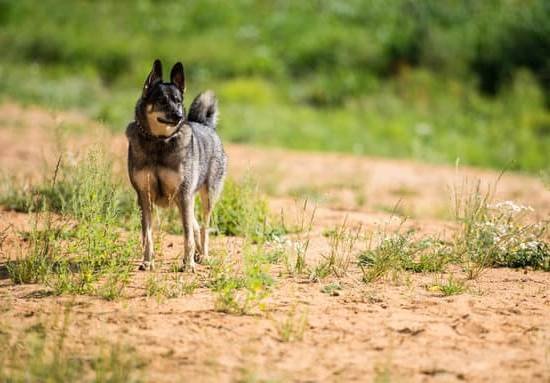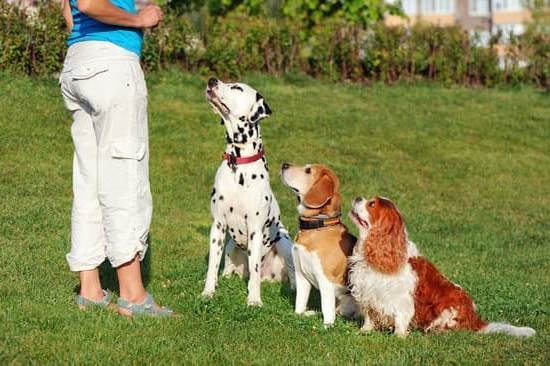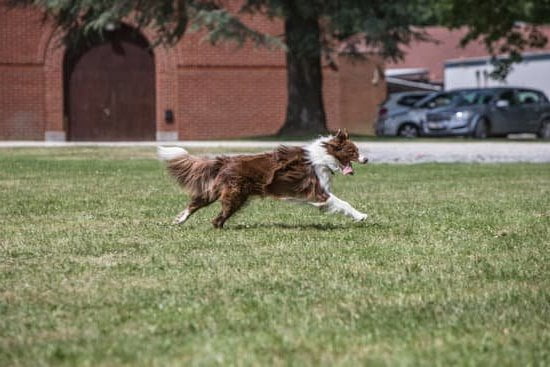What is free shaping dog training? Free shaping dog training is a technique that involves using positive reinforcement to teach your dog new behaviors or tricks. Unlike traditional training methods that rely on verbal or physical cues, free shaping allows the dog to use its own initiative and problem-solving skills to figure out what behavior will earn it a reward.
In this introductory section, we will explore the basics of free shaping dog training, including the history of this method, the science behind canine learning and behavior, the benefits of using free shaping techniques with your pet, common challenges that may arise, and real-life success stories from dogs who have thrived with this type of training.
By understanding the fundamentals of free shaping dog training, you can develop a stronger bond with your pet and enhance their cognitive abilities while having fun together. Whether you’re a seasoned trainer or just starting out with your furry companion, this article will provide you with a comprehensive guide on how to embrace the future of dog training using free shaping techniques.
The History of Free Shaping Dog Training
Free shaping dog training is a technique that has been around for decades, but has recently gained popularity as more dog owners seek positive reinforcement methods for training their pets. The concept of free shaping can be traced back to the work of renowned animal behaviorist and psychologist B.F. Skinner. Skinner’s pioneering research in operant conditioning laid the groundwork for free shaping as a training method for dogs and other animals.
The Origins of Free Shaping
Skinner’s experiments with pigeons in the mid-20th century involved using a method known as “shaping” to mold the birds’ behavior through reinforcement. This process involved rewarding the pigeons for behaviors that were closer and closer to the desired end result, eventually leading them to perform complex actions through a series of small steps. Dog trainers began to apply these principles to canine training, evolving the technique into what is now known as free shaping.
The Evolution of Free Shaping
Over time, free shaping has evolved beyond its original applications in laboratory settings and into mainstream dog training. As more pet owners seek gentle, effective methods for teaching their dogs new behaviors and tricks, free shaping has become an integral part of positive reinforcement training techniques. Today, free shaping is widely used by professional dog trainers, enthusiasts, and even those just starting to explore the world of positive reinforcement training for their pets.
As we delve deeper into the history of free shaping dog training, it becomes clear that this approach has roots in scientific research and has flourished as a valuable tool in modern canine behavior modification. Understanding how free shaping originated and developed over time provides insight into why it has become an essential component of many dog trainers’ toolkits.
The Science Behind Free Shaping
Free shaping dog training is a method that involves allowing the dog to freely exhibit behaviors in order to encourage and shape desirable behaviors. This technique relies heavily on understanding the science behind canine learning and behavior. By exploring how dogs learn and respond to different stimuli, trainers can effectively utilize free shaping to teach new behaviors or refine existing ones.
Canine Learning Behavior
Understanding how dogs learn is crucial when it comes to free shaping. Dogs learn through a process of association, where they link a particular behavior with a certain consequence. Whether it’s through classical conditioning, operant conditioning, or observational learning, knowing how dogs process information can help trainers effectively shape their behavior.
Cognitive Abilities
Dogs have their own cognitive abilities that play a significant role in their learning and behavior. Their ability to solve problems, follow cues, and make associations can vary based on factors such as breed, age, and prior experiences. Recognizing these cognitive abilities can provide insight into how to best implement free shaping techniques for each individual dog.
Behavioral Science Principles
The principles of behavioral science also come into play when exploring the science behind free shaping. Concepts such as reinforcement schedules, extinction, discrimination training, and generalization are all relevant when using free shaping methods. By understanding these principles, trainers can make informed decisions about how to shape and reinforce specific behaviors in their dogs.
Overall, the science behind free shaping dog training involves delving into how dogs learn and behave in order to effectively apply this technique. By understanding canine learning behavior, cognitive abilities, and behavioral science principles, trainers can utilize free shaping to encourage positive behaviors in their furry companions.
Benefits of Free Shaping Dog Training
Free shaping dog training is a technique that allows dogs to actively participate in the learning process by offering behaviors and being rewarded for their efforts. This method creates a strong bond between the pet and the owner, as it fosters communication, trust, and understanding. Below are some key benefits of free shaping dog training:
1. Enhanced Communication: By engaging in free shaping, dogs learn to pay close attention to their owner’s cues and signals, leading to improved communication between the two. This heightened understanding can strengthen the bond between the pet and the owner, as they learn to anticipate each other’s actions.
2. Increased Confidence: Free shaping empowers dogs by allowing them to make choices and problem solve on their own. This autonomy can lead to increased confidence in the pet, which can extend beyond training sessions into their everyday life.
3. Deeper Connection: Through free shaping, owners have the opportunity to observe and understand their dog’s unique personality, strengths, and weaknesses. This deeper insight allows for a more meaningful connection between pet and owner.
These are just a few of the many advantages of free shaping dog training. By employing this technique, owners can nurture a harmonious relationship with their pets while achieving desired behavioral outcomes.
Free Shaping Techniques and Tools
Free shaping dog training is a positive reinforcement training method that allows dogs to actively participate in the learning process by offering behaviors on their own. This technique involves using a marker signal, such as a clicker, to communicate to the dog when they have performed the desired behavior.
Unlike traditional training methods where the trainer prompts the dog to perform a specific behavior, free shaping encourages the dog to think and problem-solve, leading to better understanding and retention of commands.
One of the main tools used in free shaping dog training is a clicker. A clicker is a small handheld device that makes a distinct clicking sound when pressed. This sound serves as the marker signal that tells the dog they have performed the correct behavior and will be rewarded. Clickers are popular in free shaping because they provide clear and consistent feedback to the dog, making it easier for them to understand what is being asked of them.
In addition to clickers, other tools commonly used in free shaping include treat pouches for easy access to rewards, target sticks for more precise guidance, and mats or platforms for teaching specific positions or behaviors. These tools help create a structured environment for training sessions and make it easier for both dogs and trainers to succeed in free shaping exercises.
Overall, understanding the methods and equipment involved in free shaping techniques is crucial for successfully implementing this training method with your dog. By utilizing these tools effectively, you can encourage your pet to exhibit natural problem-solving abilities while building a strong foundation of obedience and good behavior.
| Tool | Description |
|---|---|
| Clicker | A handheld device that produces a distinct clicking sound when pressed, used as a marker signal in free shaping. |
| Treat Pouch | An accessible bag or pouch attached to the trainer’s waist for easy access to rewards during training sessions. |
| Target Stick | A stick with a distinctive tip used as guidance during training exercises requiring more precision. |
| Mats/Platforms | Tools used to define specific spaces for teaching certain positions or behaviors during free shaping sessions. |
Common Challenges in Free Shaping
Free shaping dog training can be a highly effective method for teaching new behaviors to your canine companion, but it is not without its challenges. One common obstacle in free shaping is the potential for frustration, both on the part of the dog and the trainer.
Since free shaping relies on the dog offering behaviors without direct guidance, some dogs may become confused or even disinterested in the process. Additionally, trainers may feel frustrated if their dog is not progressing as quickly as they had hoped.
Another challenge in free shaping is maintaining consistency and patience. Unlike traditional training methods where a trainer can lure or prompt a specific behavior, free shaping requires a high level of patience and consistency to wait for the desired behavior to occur naturally. This can be difficult for both trainers who may feel compelled to intervene, and dogs who may become restless or distracted during training sessions.
Furthermore, another common challenge in free shaping is recognizing and rewarding incremental progress. With free shaping, it’s important to reward even small approximations of the desired behavior in order to encourage further attempts from the dog. Recognizing these small successes can be challenging for some trainers who may be accustomed to more direct methods of training. However, overcoming these challenges and staying committed to the process can lead to great success in free shaping dog training.
Success Stories
Free shaping dog training has been a game-changer for many pet owners, as it provides a unique and rewarding way to enhance the bond with their furry companions. By allowing dogs to use their intelligence and problem-solving skills, free shaping has resulted in remarkable success stories.
Here are some real-life examples of dogs thriving with free shaping training:
- Max, a rescue dog, had severe anxiety and fear-based aggression towards other animals. Through free shaping, his owner was able to gradually desensitize Max to triggers and reinforce calm behavior. Max now feels more confident around other animals and is enjoying a happier, stress-free life.
- Bella, an energetic border collie, struggled with impulse control and often engaged in destructive behaviors. Through free shaping exercises, Bella’s owner was able to channel her energy into interactive games and agility training. This not only improved Bella’s behavior but also gave her an outlet for her high energy levels.
- Rocky, a shy and nervous pup, used to cower away from new people and experiences. With the help of free shaping, Rocky’s owner was able to build his confidence by using positive reinforcement to encourage bold behaviors. Now, Rocky is outgoing and enjoys meeting new people without any signs of fear or anxiety.
These success stories demonstrate the transformative power of free shaping dog training in addressing various behavioral issues and strengthening the human-canine relationship.
By incorporating free shaping into their training routine, pet owners can witness remarkable improvements in their dog’s behavior while fostering a deeper connection based on trust and cooperation. As these success stories show, the possibilities are endless when it comes to what is achievable through this innovative form of canine training.
Getting Started With Free Shaping
Free shaping dog training is a method that allows dogs to actively participate in their own learning process. This technique involves rewarding a dog for making small, incremental steps towards a desired behavior, rather than simply waiting for the dog to perform the exact behavior before offering a reward. Free shaping encourages dogs to think and problem-solve, resulting in a more engaged and motivated learner.
To get started with free shaping, it’s important to begin with the basics. Choose a quiet, distraction-free environment where you and your dog can focus without interruptions. Have high-value treats on hand to use as rewards for your dog’s progress. It’s also essential to have patience and an open mind – free shaping requires time and flexibility, as every dog learns at their own pace.
Start by selecting a specific behavior you want to teach your dog, such as touching an object with their nose or picking up a toy. Once you have chosen the behavior, observe your dog closely and look for any slight movements or actions that resemble the desired behavior.
As soon as you see even a small step towards the desired behavior, immediately mark it with a clicker or verbal cue such as “yes,” and then reward your dog with a treat. Repeat this process, gradually shaping and refining the behavior until your dog consistently performs the desired action.
Many dog trainers find that using clickers during free shaping greatly enhances the training process. Clickers provide a clear and consistent way of marking desirable behaviors in real-time, helping dogs understand exactly what they are being rewarded for. Additionally, using high-value treats such as small pieces of cooked chicken or cheese can motivate your dog to actively participate in their training sessions.
| Key Benefits | Relevant Information |
|---|---|
| Bonding | Developing stronger bond between owner and pet through active participation. |
| Motivation | Encouraging dogs to think and problem-solve while learning new behaviors. |
| Persistence | Teaching patience through gradual shaping and refinement of behavior. |
Conclusion
In conclusion, free shaping dog training is a revolutionary method that has transformed the way we understand and train our canine companions. By utilizing this technique, dog owners can tap into their pet’s natural learning abilities and cognitive processes, creating a stronger bond and deeper understanding between human and animal. Through the use of positive reinforcement and shaping behavior through tiny steps, dogs are able to learn new behaviors in a fun and engaging way.
The benefits of free shaping dog training are numerous, from boosting a dog’s confidence and problem-solving skills to enhancing communication with their owner. This approach also encourages creativity and adaptability in both the trainer and the dog, making it an enjoyable experience for both parties involved. Through patience, consistency, and understanding of canine behavior, free shaping can be a highly effective tool in developing a well-behaved and happy pet.
As more trainers and pet owners embrace the future of dog training with free shaping techniques, it is clear that the potential for growth in this field is vast. With continued research into canine cognition and behavior, as well as advancements in training methods and tools, the possibilities for using free shaping to improve the lives of dogs and their human companions are endless.
It is an exciting time for dog training, as we continue to unlock the potential within our four-legged friends through this innovative approach.
Frequently Asked Questions
What Is an Example of Free Shaping in Dog Training?
An example of free shaping in dog training is teaching a dog to fetch by rewarding any interaction with the ball – whether it’s touching it, nosing it, or eventually picking it up and bringing it back.
What Is Shaping a Behavior in Dog Training?
Shaping a behavior in dog training involves breaking down the desired behavior into small achievable steps. By rewarding each step towards the final behavior, the dog learns and eventually performs the whole action.
What Are Shaping Steps in Dog Training?
The shaping steps in dog training typically involve starting with capturing any behavior close to the desired one, then gradually requiring more specific actions for a reward. This process continues until the complete behavior is achieved through successive approximations.

Welcome to the blog! I am a professional dog trainer and have been working with dogs for many years. In this blog, I will be discussing various topics related to dog training, including tips, tricks, and advice. I hope you find this information helpful and informative. Thanks for reading!





